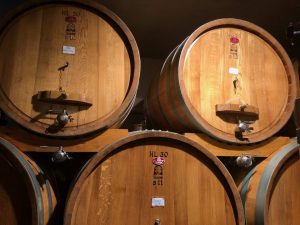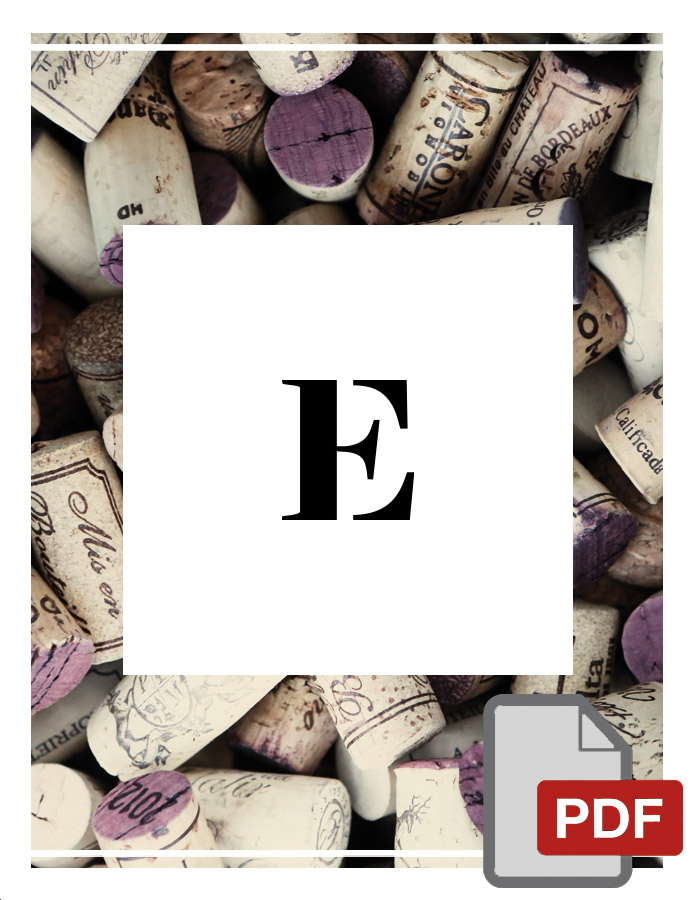Wineries
Moschioni – visiting the winery

Hello All!
Today I am even happier than usual because I have the opportunity to talk to you about Moschioni, a winery that has chosen to devote itself to red wines (which I love) in a land famous at world wide level for the quality of its whites.
The winery
Sabrina (Michele’s wife) welcomes us; Michele was busy with the wine rackings so we just said hello to him; Sabrina, together with Michele and her two children run the winery.
The winery, officially certified organic in 2017 but complying with the organic rules since Michele took it over in1986, has 12 hectares of vines and produces 36 to 40 thousand bottles a year.
The vineyards are maximum 3km away from the winery, some in the hills and others in the plains and the different types of vines have been planted according to the terrain.
As already said Michele joins the company 33 years ago and changed everything; from the cultivation of white grapes he went to the red ones giving priority to the autochthonous vineyards and the quality.
The labels
The basic labels are 5, all red wines; they are experimenting with a classic method bubble with sits on the yeast for 36 months (70/80% Chardonnay and 20/30% Ribolla Gialla) born by chance in 2014 when, the white berried grapes that the winery grows, have not been bought by the normal buyers (as we know 2014 was a difficult year); as I said this bubble is still in the experimental phase with a very small production not yet available for the market.
Going back to the heart of the Moschioni activity, the red wines, as I said there are 5 basic labels, 3 native wines; the Pignolo, the Schiopettino and the Refosco plus 2 blends: the Celtico (50% Cabernet Franc, 50% Merlot) and the Rosso Real (50% Tazzelenghe, 25% Merlot, 25% Cabernet Sauvignon)
The yield in the vineyard is deliberately kept low in order to obtain a structured and quality product; the philosophy of the winery is that the wine is made in the vineyard! The Pignolo is the plant with the lowest yield, from 20 and 25 quintals per hectare; the other grapes reach 50 quintals per hectare.
Think that Moschioni produces a third of what allowed by the disciplinary.
The winemaking
All the processes (both in the vineyard and in the cellar) are manual.
The harvesting
The grapes are manually harvested and placed on a single layer in 4 kg crates and 20 kg plateaoux which are left for few days in a room-temperature shed; if the weather is nice, the natural air allows the grapes to continue to ripen and lose some water; in case of bad weather, a special machine is used to warm the air and recover the moisture.
This method may seem like a withering of the grapes but it is not really the case, in fact when the grapes go through the wine making process, they are still intact (firm), only the stalk goes from green to turn brown.
In the cellar
Once in the cellar, the grapes are squeezed and then they start the fermentations that are all natural; the wine rests from October to April in steel; In April there is the first racking in barriques of first and second use (each year there is a change of barriques of 50/60% because after the second usage they are replaced).
After the first 12 months there is the second racking and the wine is transferred into 2000/3000 liter wooden barrels where it ages for a period ranging from 2 to 4 years depending on the type of wine. At the end of the aging period, all the wines except Pignolo and Schioppettino are decanted into steel tanks.
The Pignolo and the Schioppetino instead have a further passage in wood (in the barriques where they fermented).
Finally it gets bottled with a very light filtering in order to remove impurities since during the whole route described above, the wine is never filtered.
Once bottled, the wine rests for an additional 12/18 months in the cellar before going on the market.
The “special” labels
To the 5 official labels, 2 “occasional” labels can be added; they are produced only in the years in which the climatic conditions do not allow the grapes to ripen as desired and therefore after the first tastings, Michele realizes that the quality is not label height.
Tasting
We had the honor to taste 2 wines:
Rosso Celtico is a blend (50% Cabernet Franc, 50% Merlot), so called because at the time of planting the vines, remains of the Celtic period were found during the excavation of the soil; it is the wine most produced by the winery, about twice as much as other labels (perhaps even the simplest to drink); an elegant wine, with notes of red fruit, cherry, jam; long, which remains in the mouth for a long time; an important wine with noble tannins.
The Pignolo: a native wine that can afford to go out on the market 10 years after the harvest (and there are not many Italian wines that can do it); the vines are among the oldest of the company coming from the Abbazia di Rosazzo in the 40s; Moschioni is one of the first companies to have carried on the history of Pignolo, a wine of highest quality still not very popular abroad.
Tasting it you can feel all the work done in the vineyard there are the aromas of cooked plum, nutmeg, cocoa, tobacco, leather, red fruits which is the aroma that unites all Moschioni wines. In the mouth it is powerful with an important tannin that is refined over the years…. Il Pignolo, like all Moschioni wines, improve with time and maintain all its characteristics for at least 20 years.
If you love red wines where you absolutely have to taste the Moschioni labels… start with the Celtic and then … continue with all the others!
see you soon
Ilde





